Seeing something spectacular and recognizing it as a photographic possibility is not a very big step forward. But seeing something ordinary, something you would see every day and recognizing it as a photographic possibility – that’s what interests me.
Stephen Shore
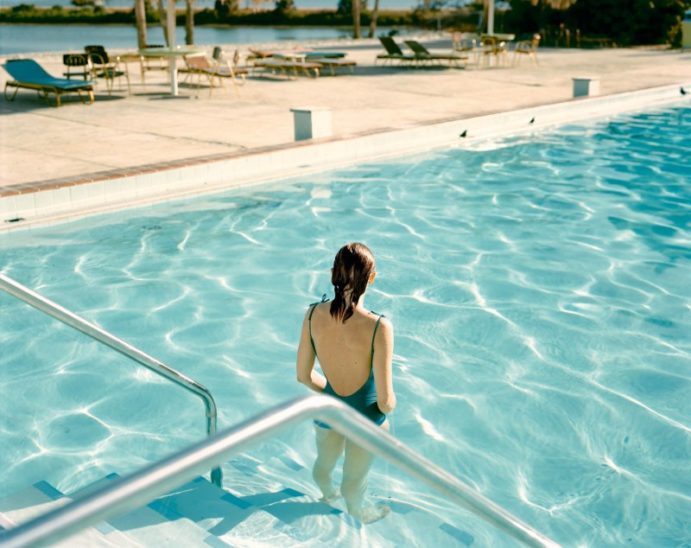
Stephen Shore was born in 1947 in New York City. He started photography at a very early agefrom his early teens, and with some confidence. In 1961, at the age of 14, the age when few boys have the courage to approach a girl, he picks up the phone and calls Edward Steichen, then director of the photography department of the Museum of Modern Art in New York.. Steichen, a respected authority in the field, receives a call from a very optimistic young man who wants to show him his pictures. Shore later recounts that at the time, he just didn’t know it wasn’t being done, and had no better idea how to find someone to show his work to. His audacity paid off, Steichen bought 3 photographs from him, making him the youngest Shore photographer to enter the MoMA collections.
This first adventure won’t be the only one in Shore’s career. A few years later, in the year he turned 17, he was already an emerging artist on the New York conceptual and pop-art scene, and unsurprisingly, he ended up running into Andy Warhol. When they met for the first time in 1965, Warhol was so impressed by the young photographer’s work that he invited him to come to The Factory, the place where he settled and which was at the time the beating heart of art in New York.. Considering he’ll learn more there than he did in school, Shore dropped out of high school and went to the Factory every day for the next three years.

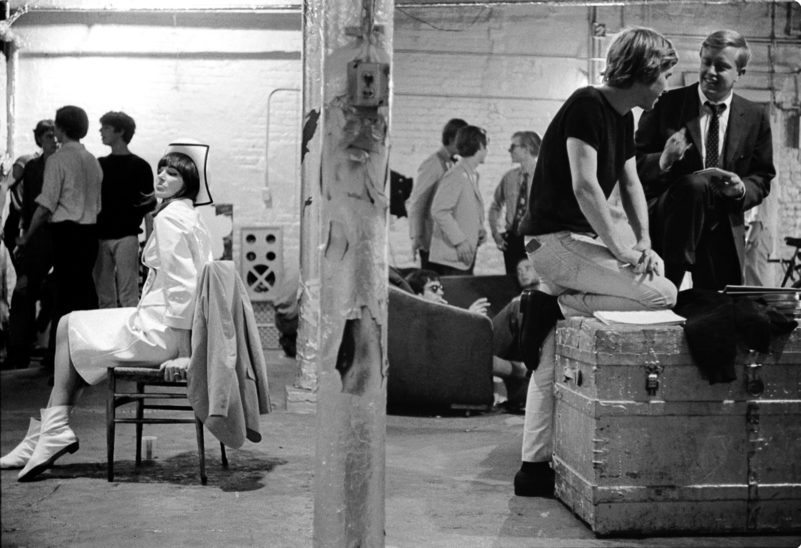
At the end of 1967, he had gathered a set of photographs, a documentation as close as possible to the philosophy of the studio.and people gravitating around it, and in the years when he was most active.
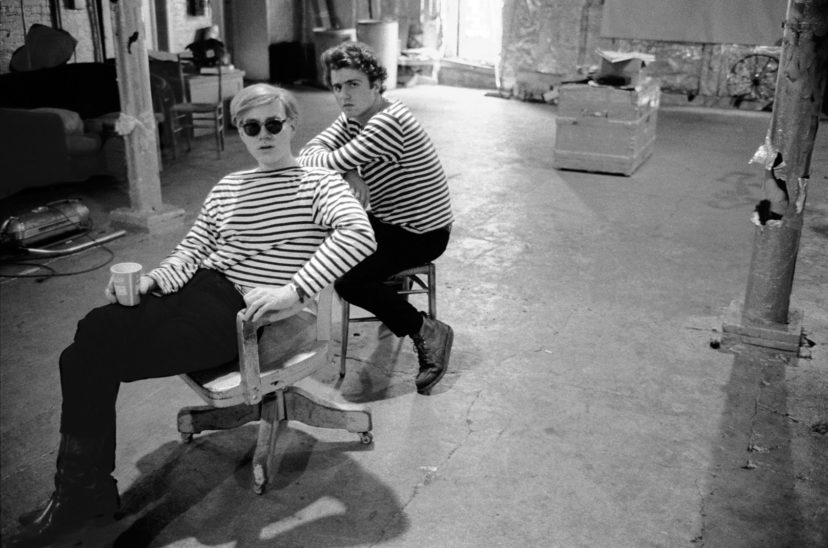
It emerges inspired by Warhol’s work ethic and continues in parallel his own, centered on conceptual photography.which he shows regularly at the renowned Light Gallery. His young age, passion, talent and determination quickly attracted the attention of the most influential curators, and In 1971, at the age of only 24, he became the first photographer to have a solo colour exhibition at MoMA..
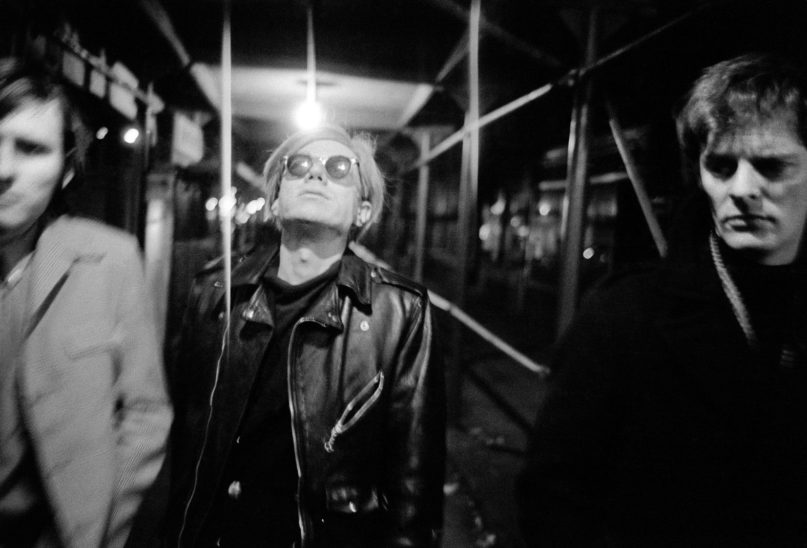
His first project: American Surfaces
American Surfaces is one of Shore’s first major projects. To understand it, you first have to understand its tastes. In the America of the 70s, Shore likes color, the color that is unique to the USA, the color of postcards, instant photographs and television. Conversely, art was black and white, and that’s something he doesn’t understand. He wants to question this convention through this work.
It was then, in 1972, at the age of 25, that Shore, who until then had only known Manhattan, embarked on a road trip to the western United States.. This journey will be the first of a long quest for another America.

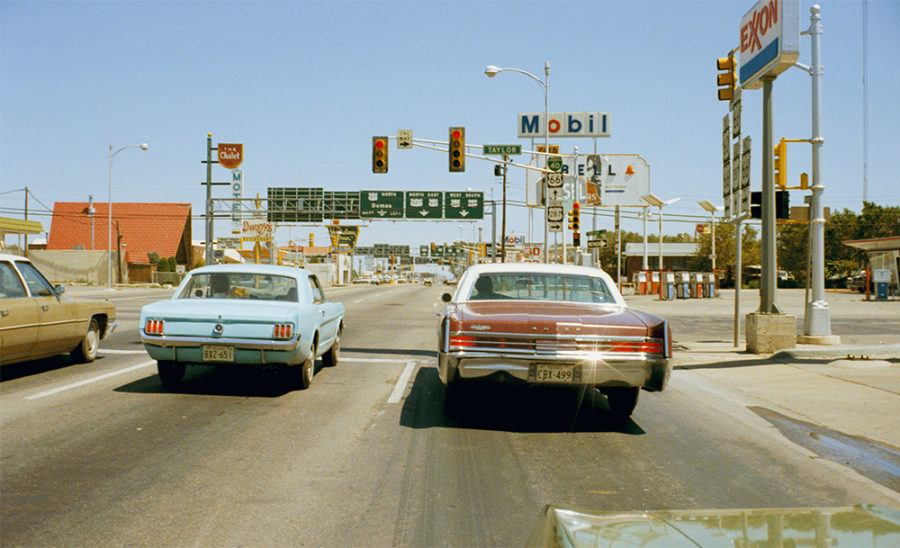
In this job, Shore compiles images of a country that no longer has its glitter, with a less flashy aesthetic than that of the commonplace.…more fragile. Shore photographs everything, every place, every meal, every meeting, every bed and hotel room, and even the emptiness of the road or intersections..



His photography is compulsive, he develops a view of his country halfway between a rigid documentary that can be produced by big names in German photography such as Bernd and Hilla Becher or the humanistic look that Walker Evans has already landed on the United States.


Explorer first, Shore shows a fragmented, unadorned reality……without mockery or staging. His approach is much more formal (he’s interested in what he sees and how he sees it) rather than narrative (he doesn’t try to tell stories), he stays on the surface of things, hence the title of the series. His photography is a paradox between generosity and rudimentarity: he photographs everything, even the most trivial. Shore’s America is not that of the sublime of the great spaces of Hollywood cowboy films, it is a human West, made up of small things, details, seen at human level. Simple and brutal, these images are his logbook, a photograph of the little story in the big one, through the eyes of a simple American..
If there is one element that fills these images, it is above all attention, Shore photographs in full consciousness. Like an actor, who by his mere presence fills the scene, Shore seeks to fill his images with his attention. This is an essential aspect of his work; during his journey, he stops regularly, and becomes aware of his surroundings, of what he sees.. And it is this vision, this feeling of seeing, that he seeks to retranscribe in these images. They are not embellished, the lines are not straight, there is no visual convention, because he tries to get as close as possible to his vision.

Uncommon Places
First published in 1982, Uncommon Places is the direct result ofAmerican Surfaces. Note that the author has recently reissued it, as digital technologies have allowed him to exploit negatives that he was unable to incorporate into the book at the time.
In this project, Shore’s taking the opposite tack from his previous work. We’re not talking about snapshots anymore, we’re talking about some very elaborate images….


Yes, it is, Shore uses a camera on a stand, a heavy and cumbersome camera which by its format imposes a certain rhythm of work.. This chamber produces very detailed images, and that’s all Shore’s looking for. UnlikeAmerican Surfaces, he no longer makes what attracts his attention the subject of the picture…here, he photographs scenes where sometimes a myriad of things happen…and it’s up to the viewer to find the subjects.

It’s a small world he’s exploring, not the world seen through Shore’s eyes. Sometimes these details grab us, and we get caught entering the images and looking for all the action that is going on. If American Surfaces was about the act of seeing, Uncommon Places is based on the descriptive power of the camera, which can produce complex images..

Here, Shore retains the same fascination for mindfulness, it is also what he seeks to capture, the moments when everything seems more concrete, more alive. A bit like when, for no reason, we stop to admire something innocuous in the street before going on our way again..
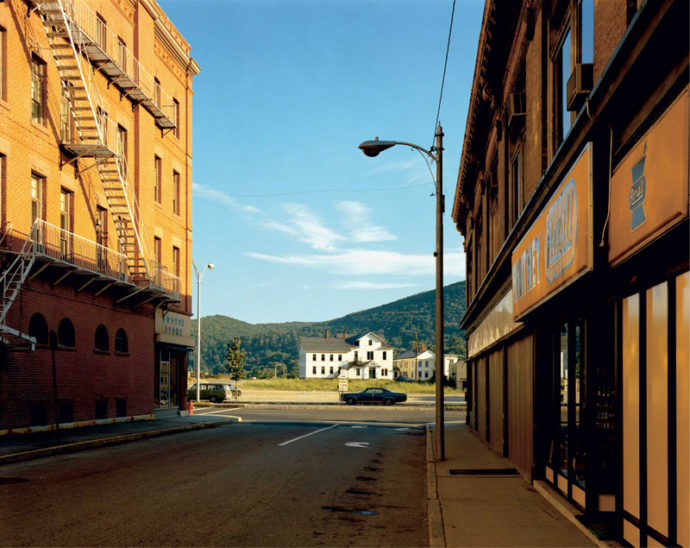
This photograph is one of Shore’s favorites.is for him the maximum density he could achieve in an image.

It is very structured, and he likes all the relationships between the shapes, the chevron, which points to the lines, the rectangles, the curves. From the everyday life of America, visual complexity is born before our eyes.
In seeking to become more aware of his surroundings, Shore fills his images with his attention, and even though they seem mundane and natural, he believes they resonate with his consciousness..
The impact of this book was felt almost immediately upon its release, changing the course of fine art photography forever and ensuring Stephen Shore a place in the bosom of photographic history..
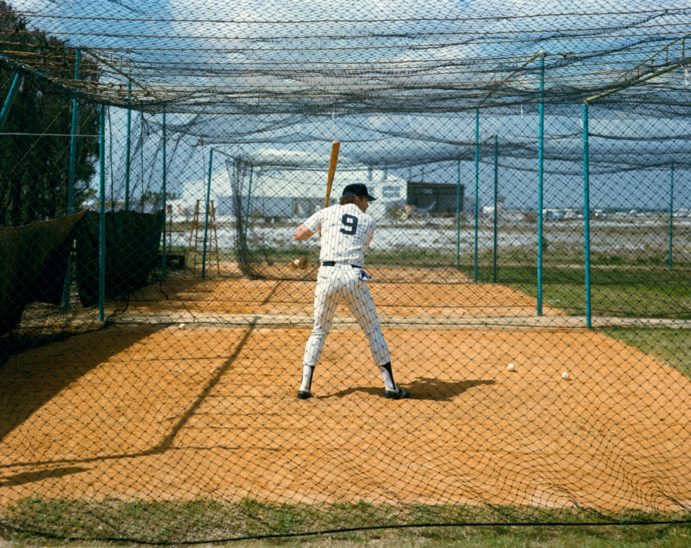
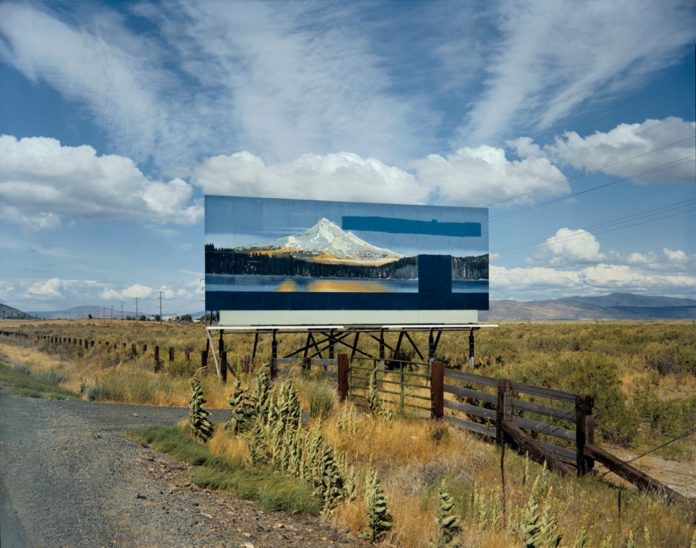
Lessons to be learned
In each of these episodes, I share with you the lessons I have learned from the work of these photographers so that they can be useful to you, inspire you and help you. In this episode, this will be a little peculiar, because Shore himself taught photography at Bard College. It’s kind of ironic, because he didn’t finish his studies and stopped at high school. Bard College is an institution teaching Liberal Art, it will not necessarily train photographers like a specialized school. Thus, he has sought to provide his students with tools that will always be useful to them.. So he’s not talking about equipment and focal length, but about how to see, with consciousness and attention, to nourish the spirit.
These courses have resulted in a book, Photography Lesson: The Nature of Photography. It is divided into 5 parts, 3 on the construction of images and 2 on the mental construction of images. Shore present in this course the 4 attributes of the image that the photographer has at his disposal to transform the world around him into a photograph. They define the content and structure of the image, this is the basic visual grammar of the photographer. These are the concepts I’m going to present to you here.
Flatness
The first of the transformations to move from the real world to photography is probably the simplest of all: the shot. The world is three-dimensional, the image is two-dimensional…. The first effect of this flatness is to bring together elements that were not, and to produce visual relationships between them. As for the cloud and the panel below.
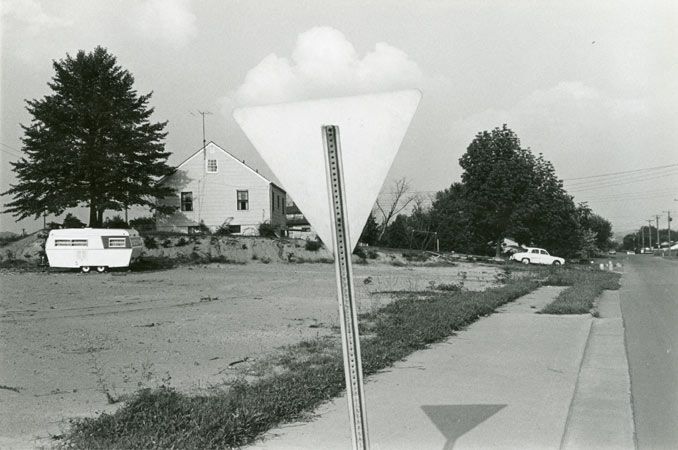
Every movement of the photographer moves objects in the shot and produces these reports. One step is enough, and the image that was perfectly legible becomes confused.
Next, this shot can be completely opaque, and stop the viewer at the outset:
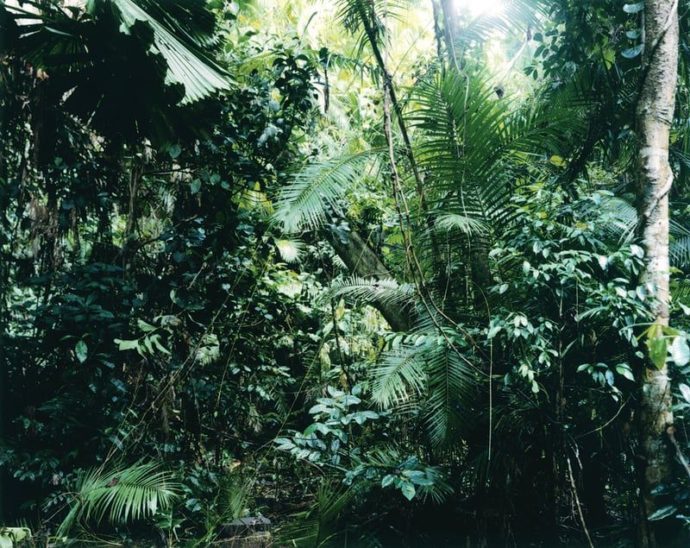
Or the other way around, be transparent and invite the spectator to enter the space of the image.
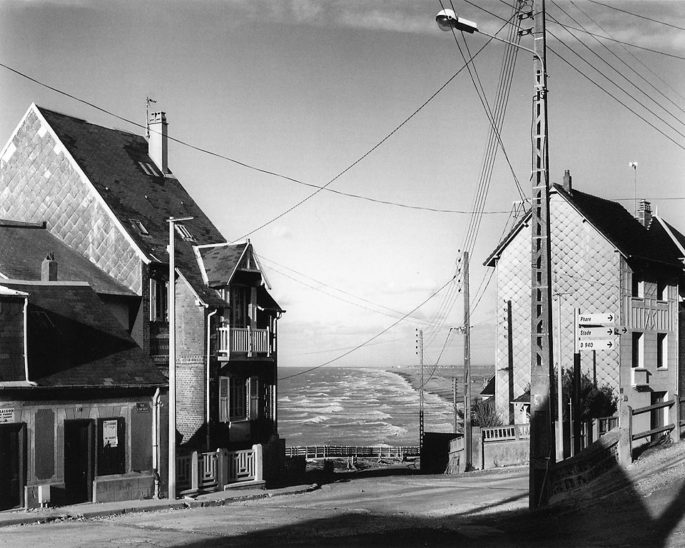
The framing
The second element of this photographic grammar is framing. Indeed, a photograph has edges, and the world is infinite…. This frame defines the content of the photograph: the objects, people, events or shapes that capture the photographer’s attention and that he or she chooses to select benefit from the frame’s emphasis. The frame “resonates” according to them, and draws the viewer to these elements. As with the shot, the transition from a frameless world to a framed photograph produces a relationship between the image content and the shapes of the frame..
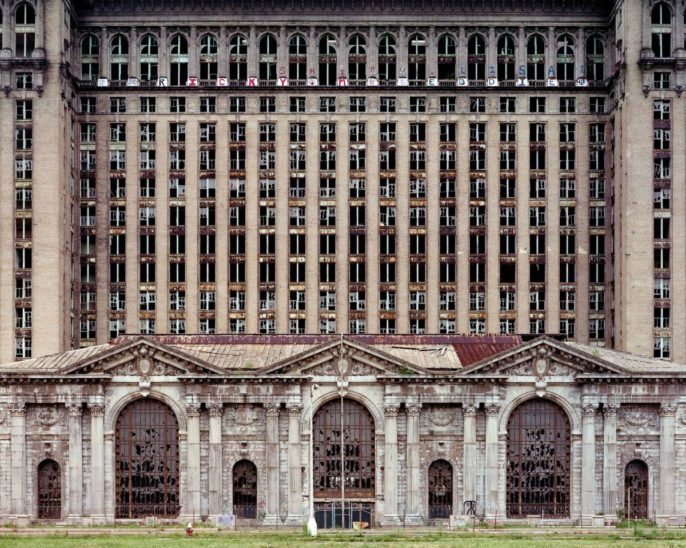
In addition to the visual reports he creates, the frame unifies the action dispersed in an imageIt allows it to form a whole (this only works if the composition of the said image is mastered, obviously).
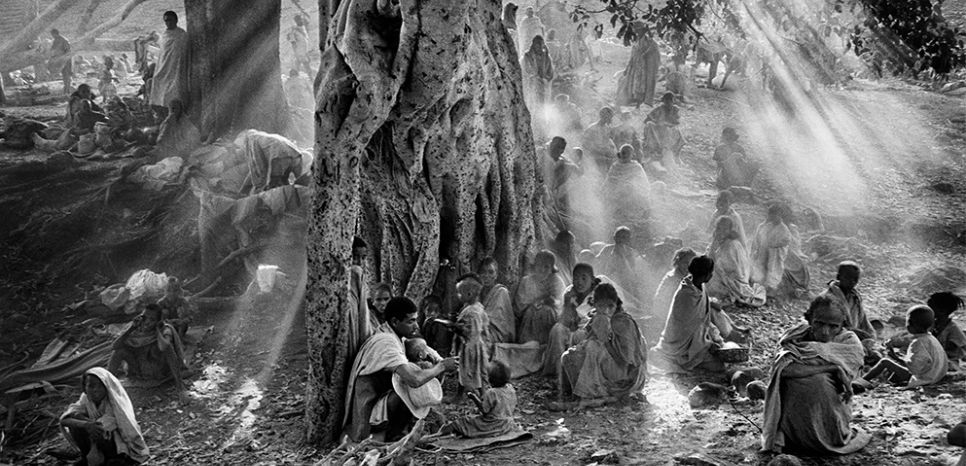
This frame can be of two different types. It may be passive, in which case it only constitutes the limits of the photograph.. The image then begins within the frame and continues outside the frame. The photograph then induces a world that extends beyond the edges of the frame. That’s the case in this photograph of Martin Parr.where the bench as well as the path leading to the parking lot induce this continuity.

On the contrary, in some images the frame is active, the image structure starts from the frame and progresses inwards. This can be seen in Araki’s photograph below: even though we know that the world exists beyond this view, the world of this photograph is enclosed within the frame.
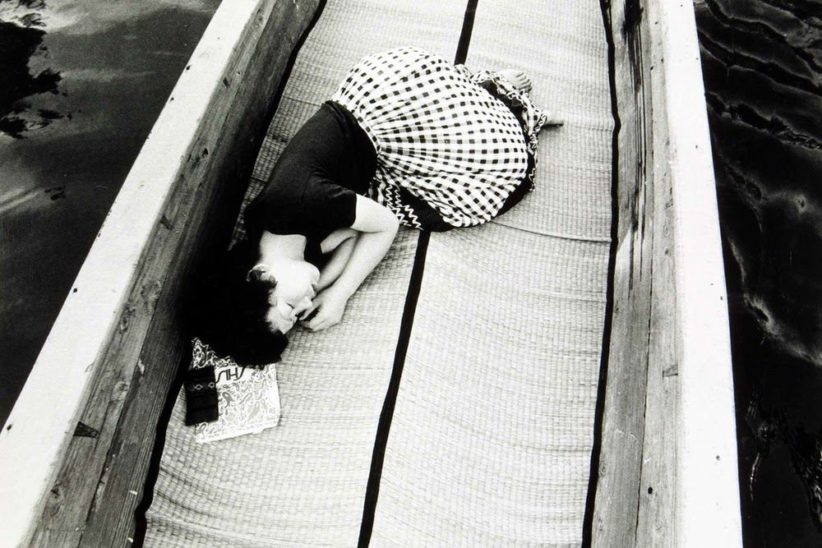
The moment
Where a photograph is static, the world evolves over time. Photography therefore freezes time, it is even one of its most essential specificities.. For example, for example.., Richard Avedon worked on that image for hoursbut in all this flow of movement there was a moment when the snake got in the right place and stuck out its tongue…a moment of one or two hundred and fiftieths of a second when the film was able to record that moment. Then the mess came back as quickly as it had gone.
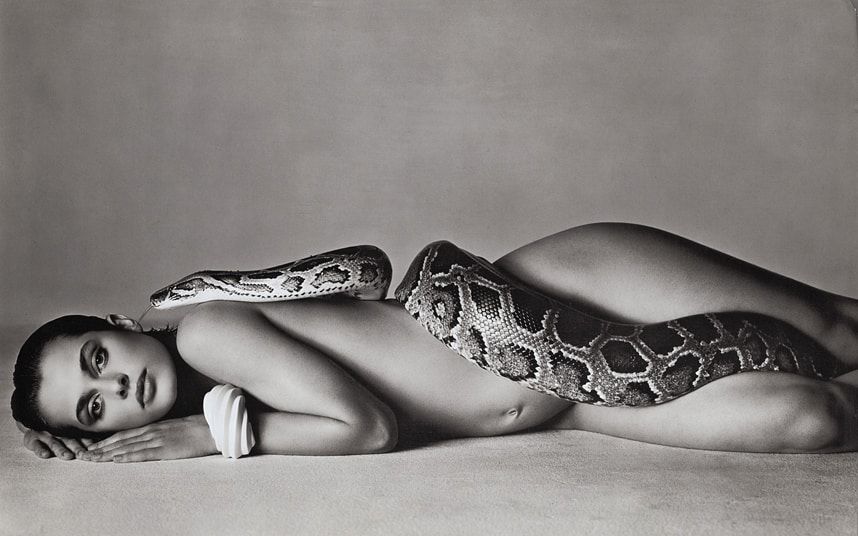
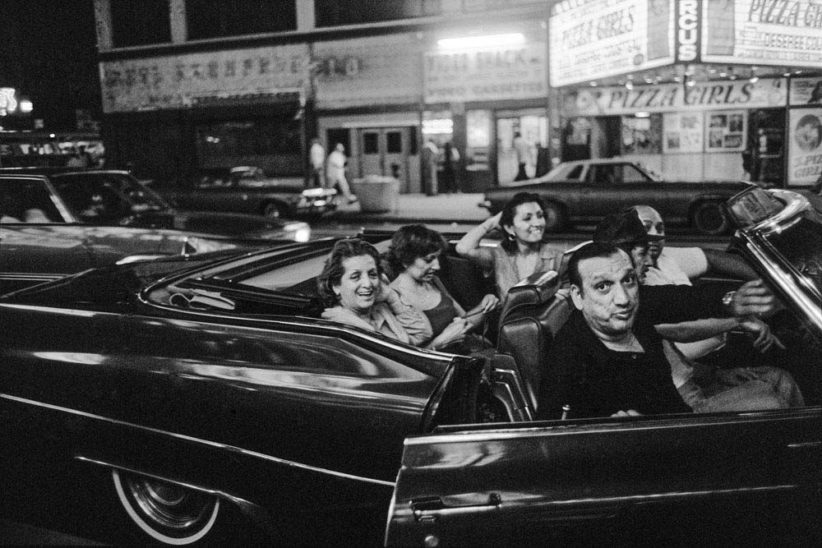
The time of a photograph is influenced by two factors: the duration of exposure and the static nature of the final image.
A very short exposure time freezes the moment, selects only a grain in the course of time, and a longer time captures the movement at the cost of a little blur, and it can lengthen until it captures eternity.
As in Michael Wesely’s photograph below, which has had an exposure time of several years.
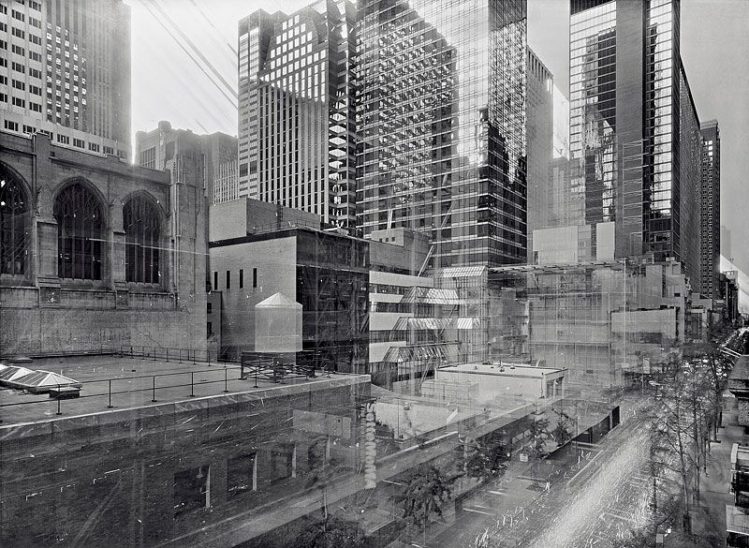
The focus
Focus is the fourth and final factor in the transformation of the world into images through photography. The camera does not simply give a view from a certain point of view, it creates a hierarchy by defining a single focus plane. This plan is usually parallel to the image plane, and allows to isolate a subject among all the elements of the image.. The viewer’s attention is naturally captured by this focused area.

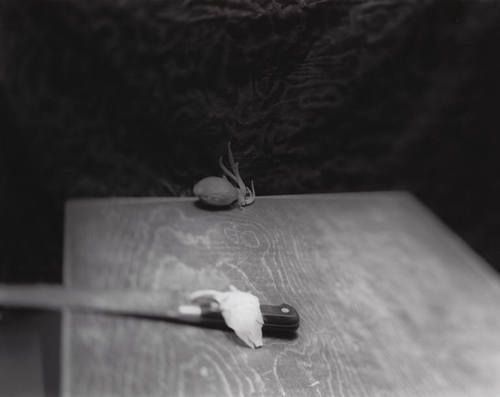
This plane is not always parallel to the image plane. In older bellows-type cameras, this plane can be shifted until it becomes perpendicular to the image plane.
The only way to eliminate the hierarchy between the elements in an image produced by focusing is to photograph a subject whose plane is parallel to the image plane. This is the case of the image below, the focus is the same all over the image, there is not one element that stands out more than another via the focus. Its hierarchical effect is removed.

This is only a small part of the Shore lessons, which I invite you to read the book to learn more..
Conclusion
Stephen Shore is a true passionate of photography, image and meaning, and has been since he was probably youngest, Stephen Shore is a celebrated artist from the sixties to the present day. He comes from pop art, and is influenced by the American Beat generation and authors such as Jack Kerouac (On the Road), he is one of the major figures of photography and an influence for a part of European photographylike Thomas Struth or Candida Höfer.

Always active and in search of images, he is present on Instagram, a social network he uses sparingly. He says that he follows few people there, in order to really follow their work, on a daily basis, and to exchange with them about their images. He observes the work of these people, who observe and comment on his own in return, and admits to being excited by this ongoing conversation and social aspect. This is indisputable proof that social networks, even if they have many drawbacks, can be used for good, and are sometimes used by the greatest.
Resources:
American Surfaces (Phaidon, reprinted May 2020): https://amzn.to/2wbr9Kj
Uncommon Places (Thames & Hudson, 2014): https://amzn.to/2wjNXHx
Photography lesson (Phaidon, 2010) : https://amzn.to/2Tnochr (not available new at the time I publish this article)




Discussion about this post